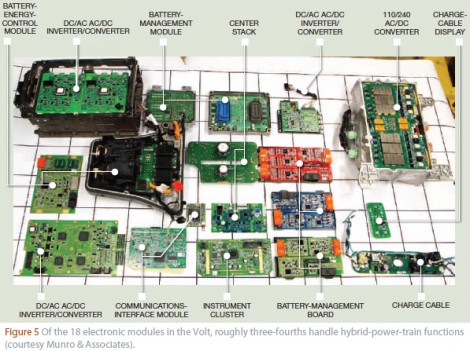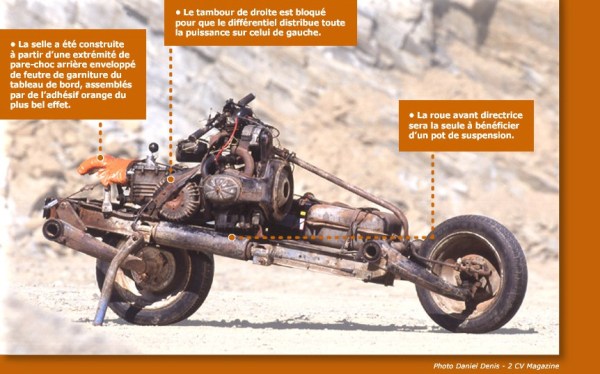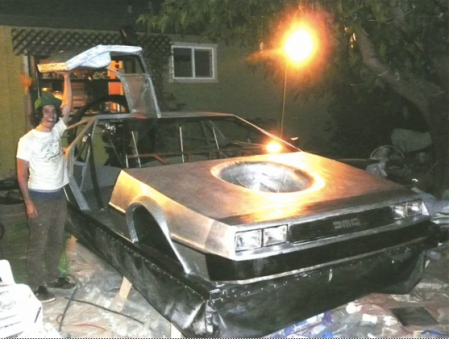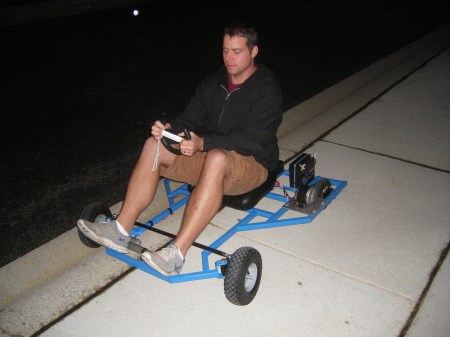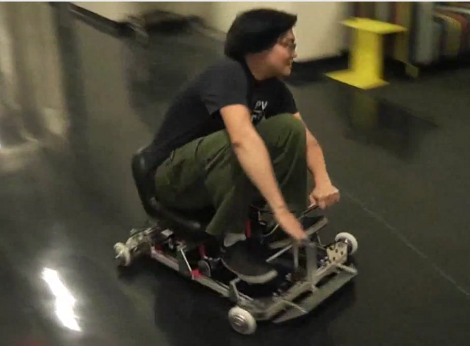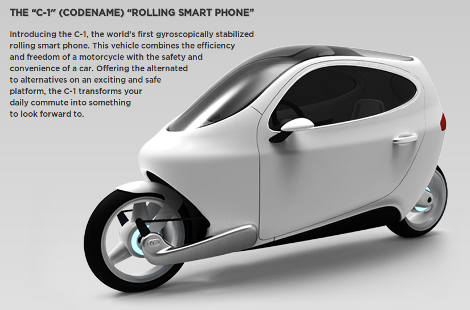
So yeah, this thing exists. Well, at least some pretty interesting looking prototypes of it do. It’s the C-1 from Lit Motors (anyone else think that’s a reference which belongs in /r/trees?). The idea here is that the small form-factor of a motorcycle is very efficient and easily maneuverable. But the cage protecting the passenger from harm, and the canopy keeping the elements out give it some of the desirable traits of a car.
Design aside, check out the video after the break. The prototype uses two horizontally positioned gyroscopes placed beneath the passenger seat, just in front of the rear wheel. The builders take it out on a hockey rink and give it a few kicks and slide a few tires into it. Sure, it reacts to the impact but it doesn’t fall over.
Want to see some fast-motion welding of the C-1? Right now there’s a one-minute clip up on the company’s main page.
Continue reading “Gyroscopically Stabilized Car/motorcycle Thing”

